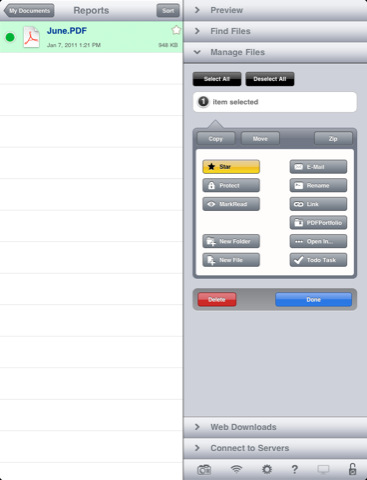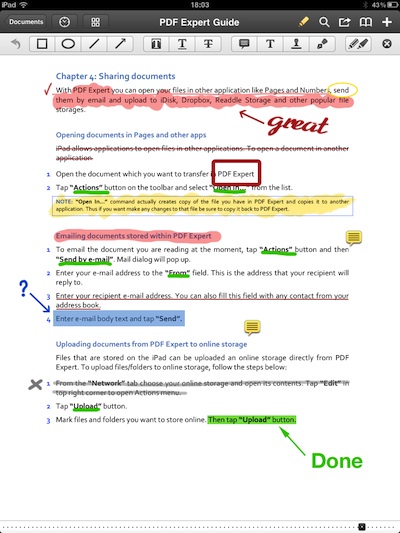Several of us in the office recently received an email from Readdle about their iPad PDF markup app. The app, PDF Expert3 gives you all kinds of power to fill out forms, annotate and share PDFs on your iPad. This brought up an interesting conversation that stretched out all week. Do you read your eBooks (when they are PDFs) in a reader like iBooks or in a annotation app?
The majority of folks around the office we talked to, do use iBooks to read their PDFs. But, as the conversation continued, there was some PDFs that were better suited for view/edit apps. GoodReader is a popular app on many of our iPads due to it’s ability to move files to/from a large variety of systems (cloud, local, network…) and it’s ability to manage files into groups. Something that a eBook reader doesn’t do well.
A eBook reader user experience is more like the physical print book world. There are shelves which you can view your book collection on, some allow you to move the books around the shelves to best order. Most allow for font size, bookmarking and highlighting text within the book. Many even have nice text search features.
A viewing/editing app solution like GoodReader and PDF Expert3 allows for a lot more customization. You can arrange the PDFs into groups and even folders of interest or in our case, projects. You are able to save your PDFs off to other locations than your iPad for access with other devices and other people. In the case of PDF annotation apps, you can also do extensive notations. While, you may not want to ‘mark up’ a romance novel eBook, you may want to mark up a instructional or technical PDF book. Especially important if the book is to be shared and viewed by others. We of course are not talking about buying a copy of a eBook and sharing it around to your friends, we believe that authors should be paid for their hard work. We do see the need to have access to a eBook we own across our many devices and being able to sort and notate become important as we move away from our office print book shelves.
There is another side to PDF ‘eBooks’ is ones you or team members create themselves. A general practice is to convert PowerPoints and even Spreadsheets to PDFs for viewing in meetings on our iPads. We aren’t expected to edit them so why not lock the view down to how it looked on the desktop rather than risk any formatting changes that happen automatically on the iPad. If these are viewed in the default eBook reader, the PDFs can get lost amongst other reading materials and are basically locked to view only. By bringing the documents into a view/editor app, it is possible to organize by meeting, make notes on the slides and share your thoughts afterwards.


